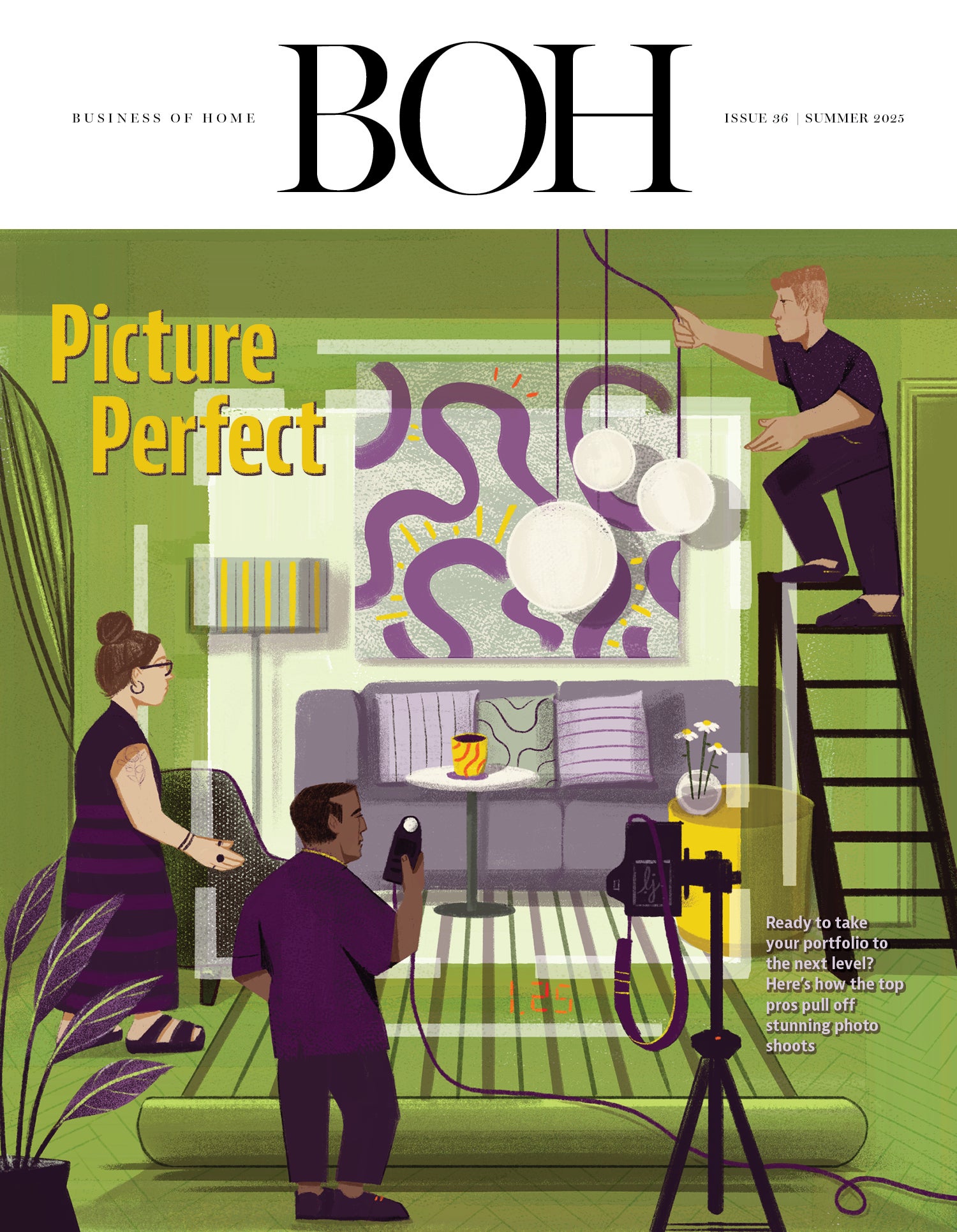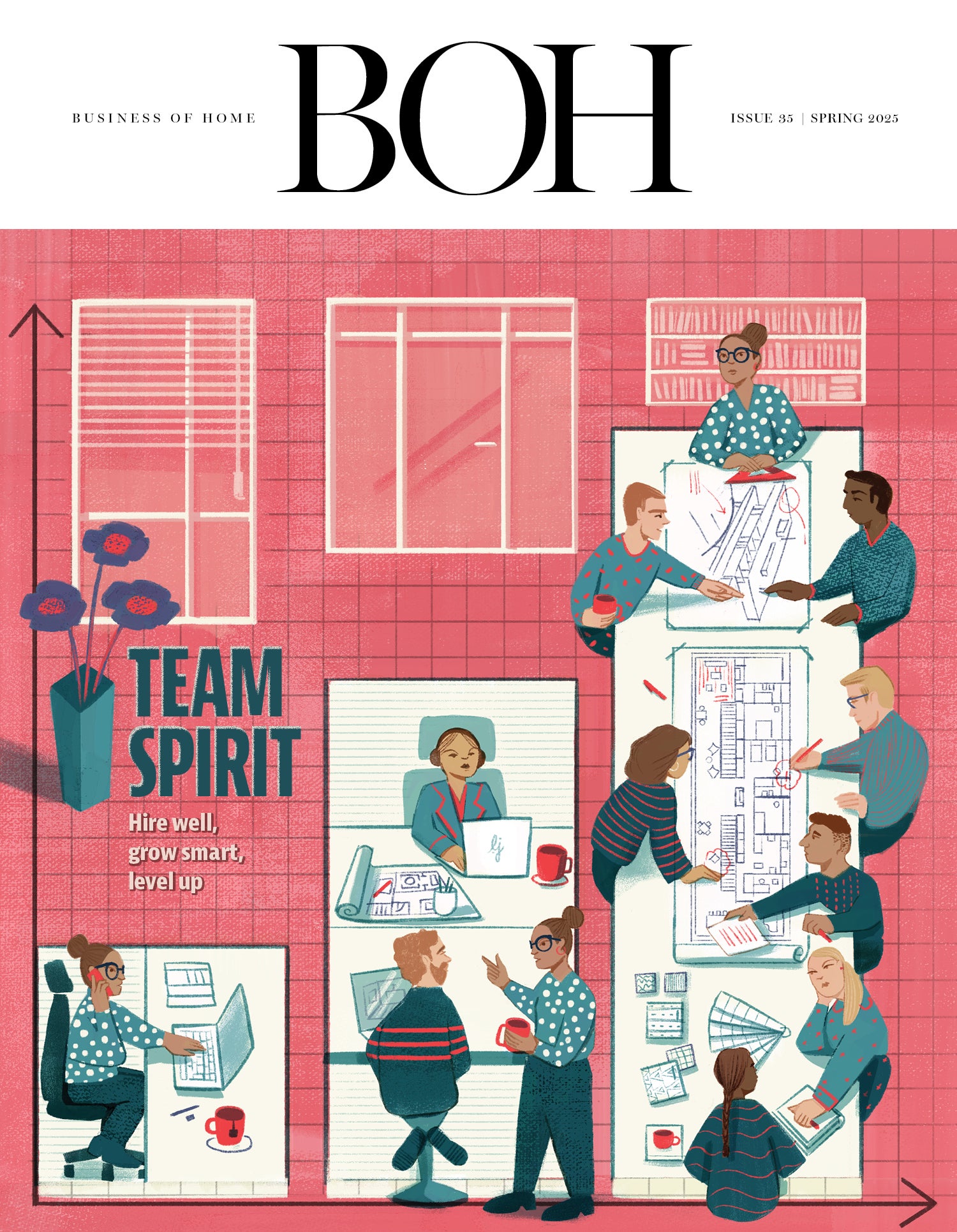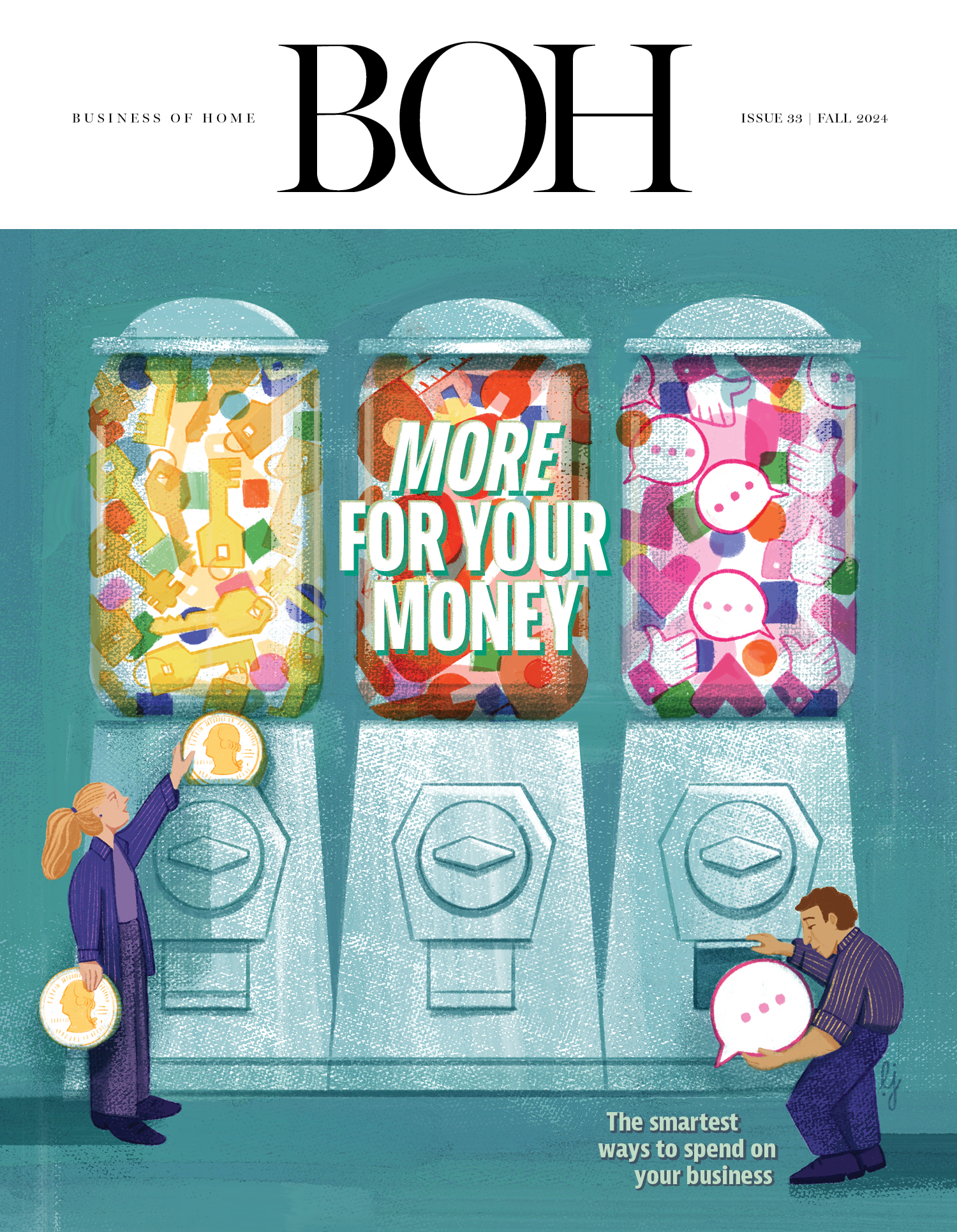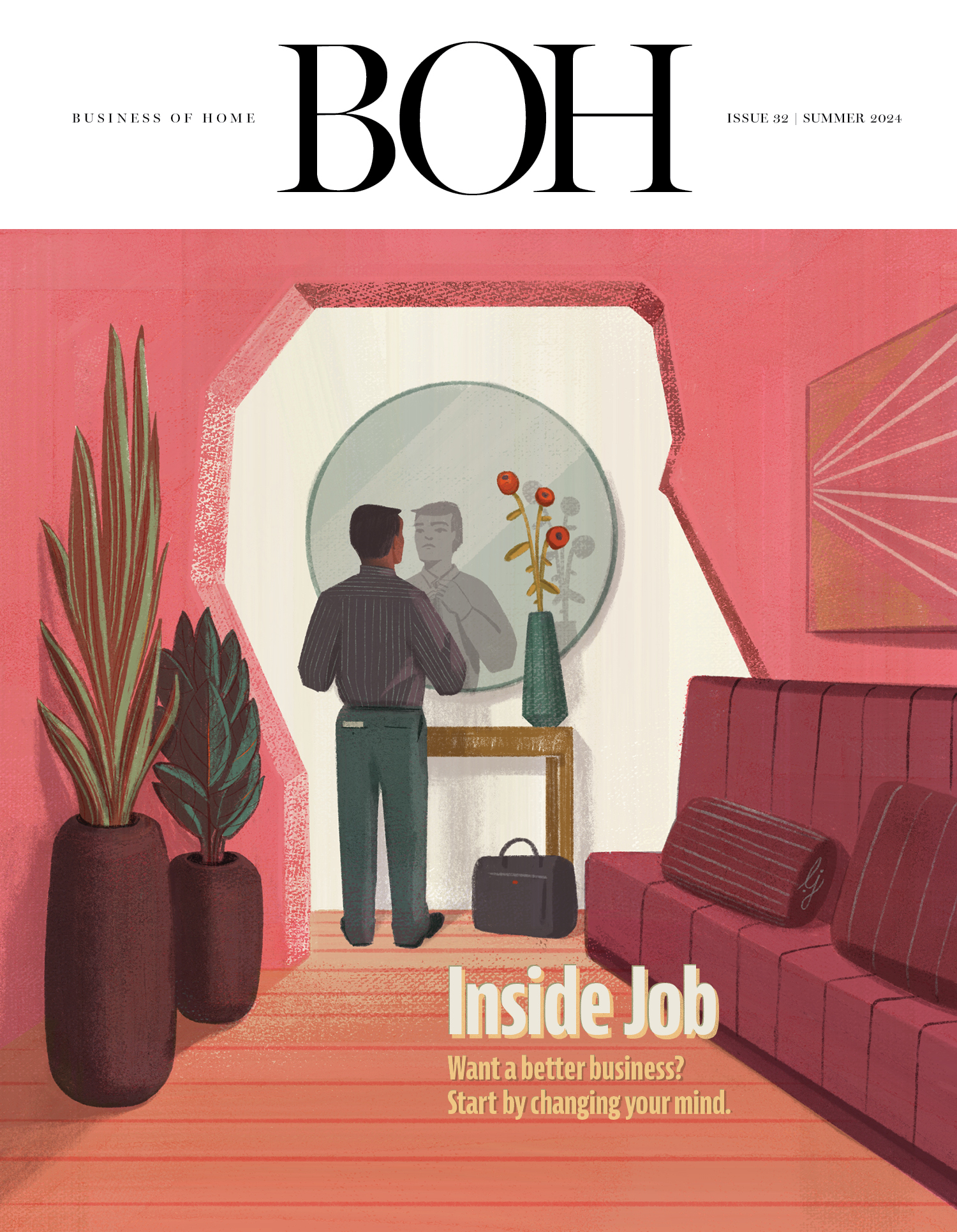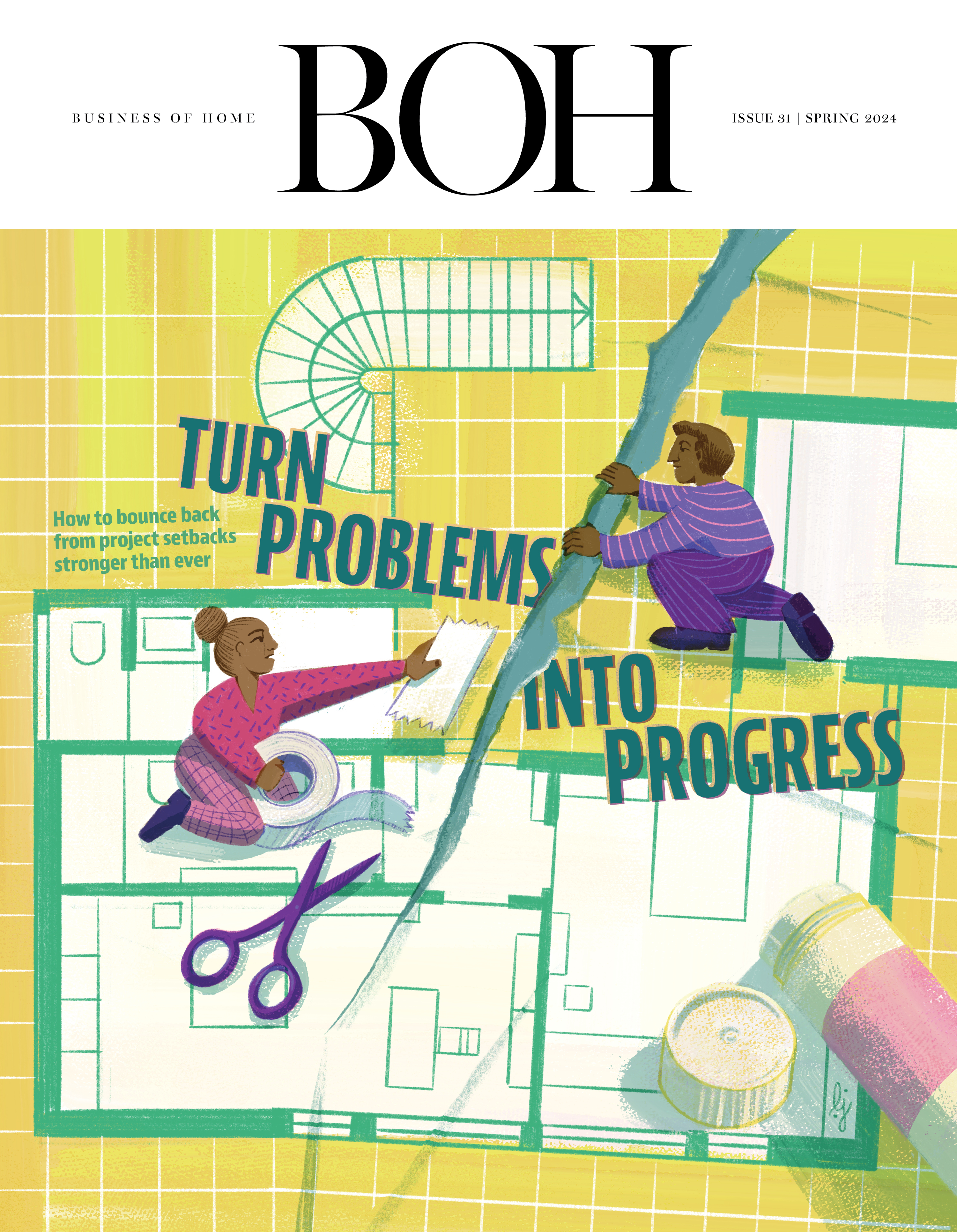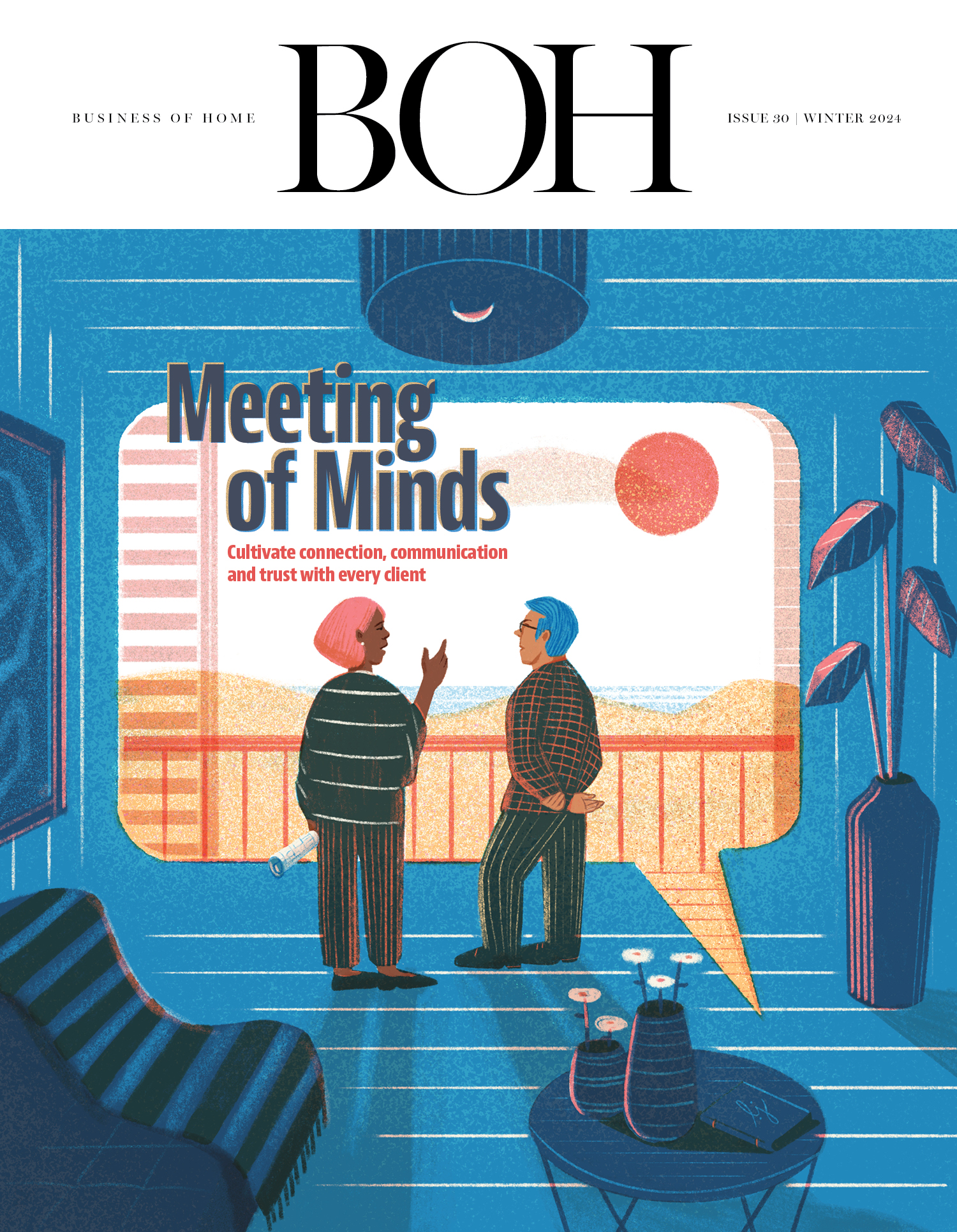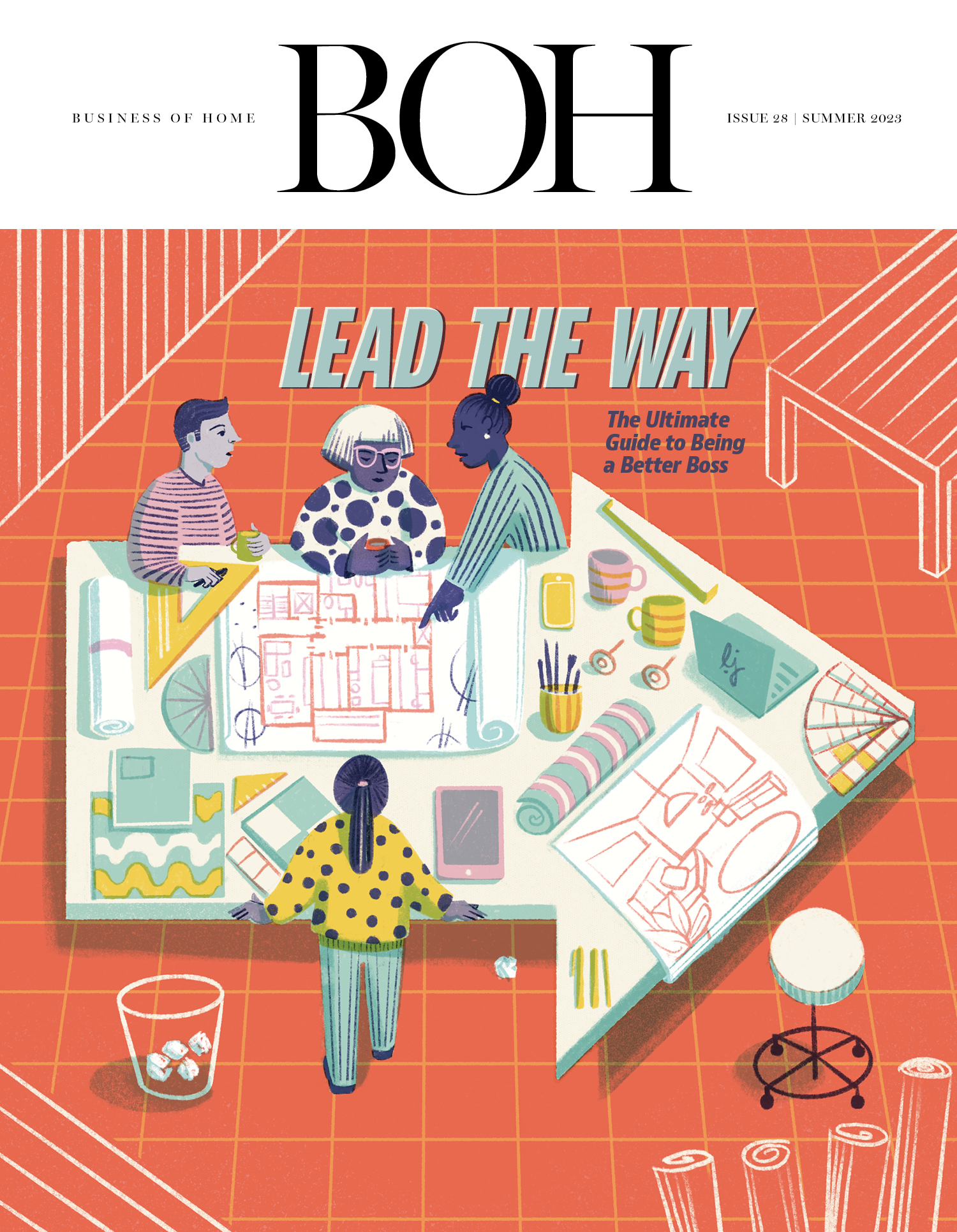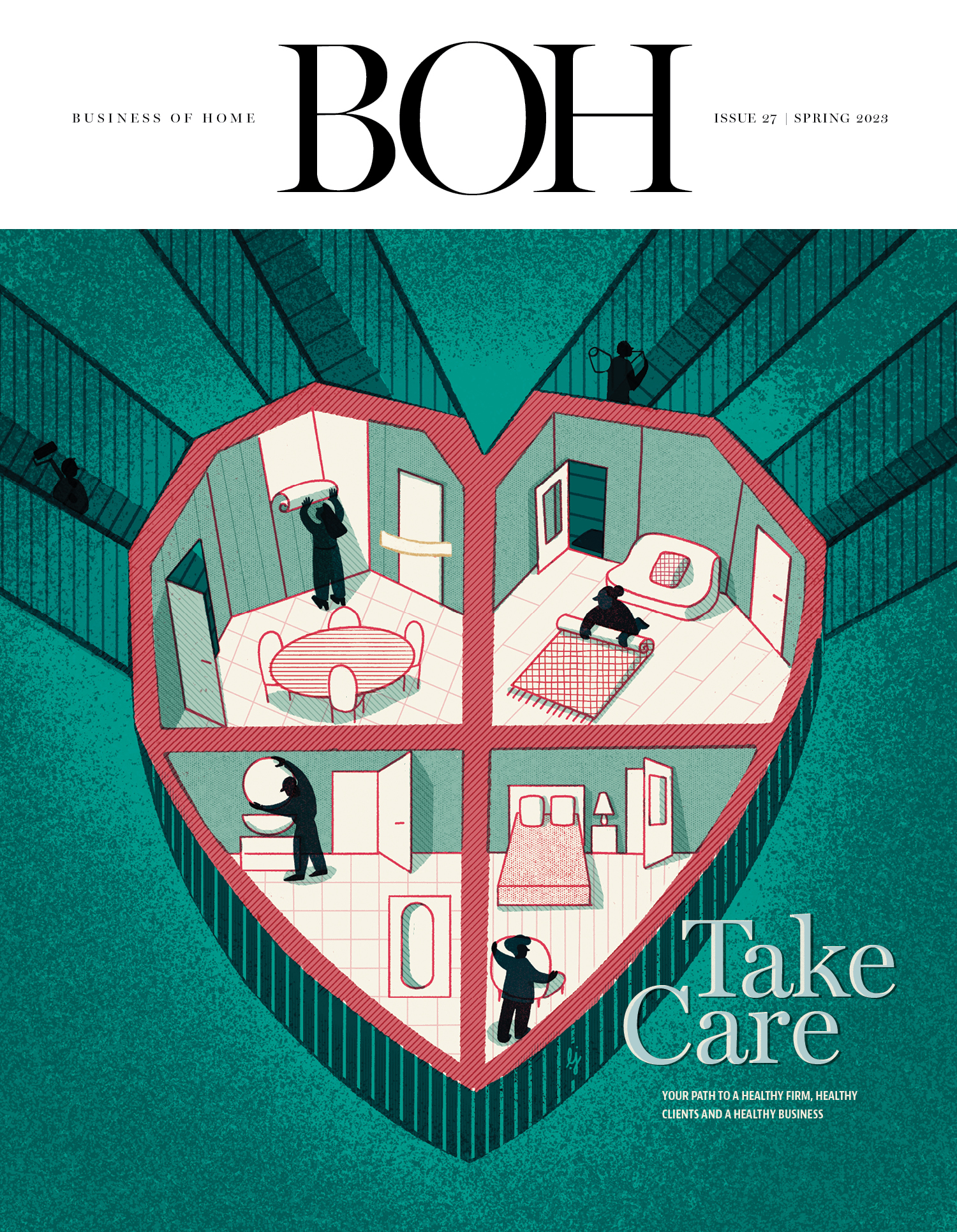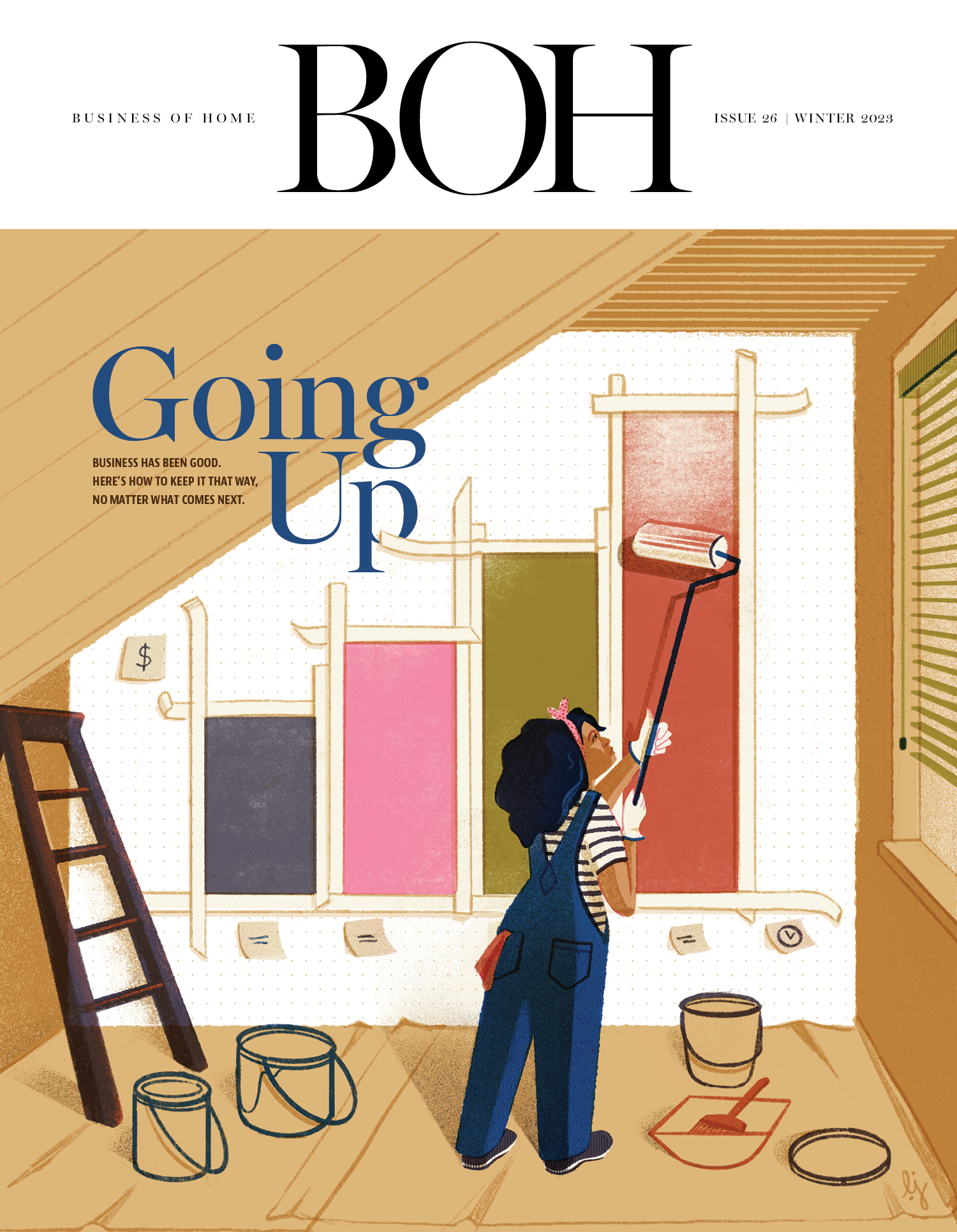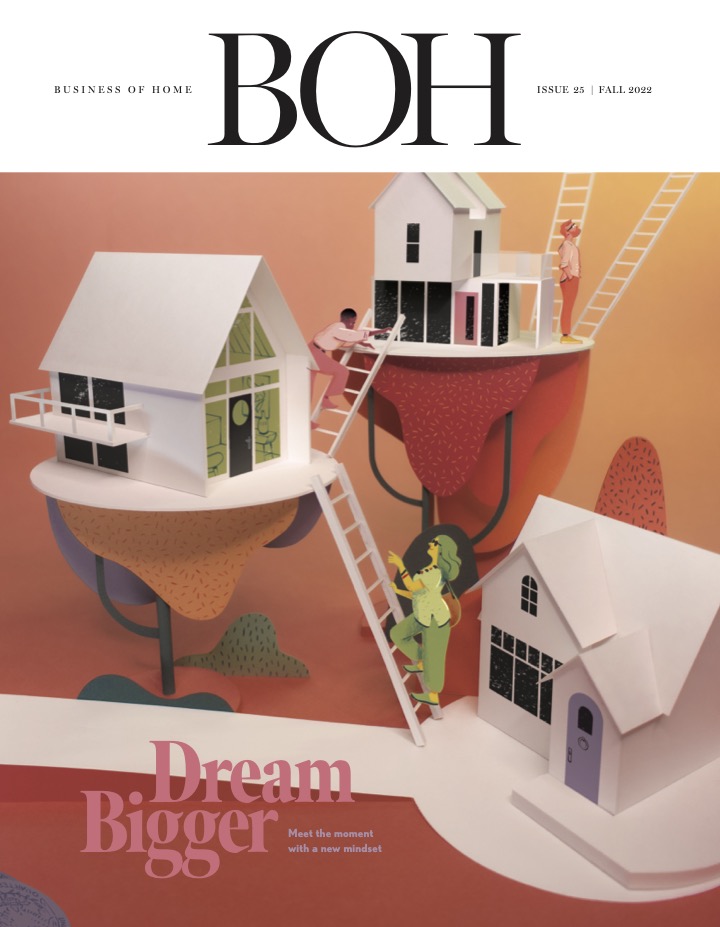Ever wonder what it must be like behind the gates of a royal estate? Or dream about swathing all the pieces and papering every wall of your next eclectic project with a mix of patterns befitting a palace? Well, legacy British design house Sanderson is here to make your most British wishes come true, partnering with The King’s Foundation to produce a spectacular collection of fabrics, embroideries and wallpapers that capture the essence of Highgrove, His Majesty King Charles III’s private manor in the Cotswolds. “He signed off on every single design,” says Claire Vallis, the creative director who developed the line—and who describes the monarch as “utterly charming.”
Royal Warrant holders since 1924—“That’s two kings, a queen and now a king,” counts Vallis—Sanderson offered the foundation the credibility of an incomparable fabric archive and, more pragmatically, had the inside track. Over the course of the past century, the company has outfitted many a royal residence. Sanderson’s role as a trustee of the Queen Elizabeth Scholarship Trust (QEST), an organization that supports the education and advancement of artisans, further strengthened the bond. With its focus on British craftsmanship and its commitment to eco-friendly, locally based manufacturing, the company matched the ethos of The King’s Foundation for the Highgrove collection with flying colors.
THE THREE PILLARS
Formed in 1990, The King’s Foundation is dedicated to creating sustainable communities around the world. It is built on three pillars: prioritizing sustainability and the environment, supporting disadvantaged communities, and preserving Britain’s cultural heritage. All proceeds from the Highgrove collection fund its comprehensive slate of programs encouraging biodiversity, combating climate change, aiding at-risk populations and teaching traditional skills. Along with The King’s Trust—which promotes entrepreneurship—the charity encompasses all of King Charles’s values. Highgrove and its gardens embody them. “It’s very much the home of the foundation,” says Vallis. Finding inspiration for the collection was as simple as strolling the grounds.
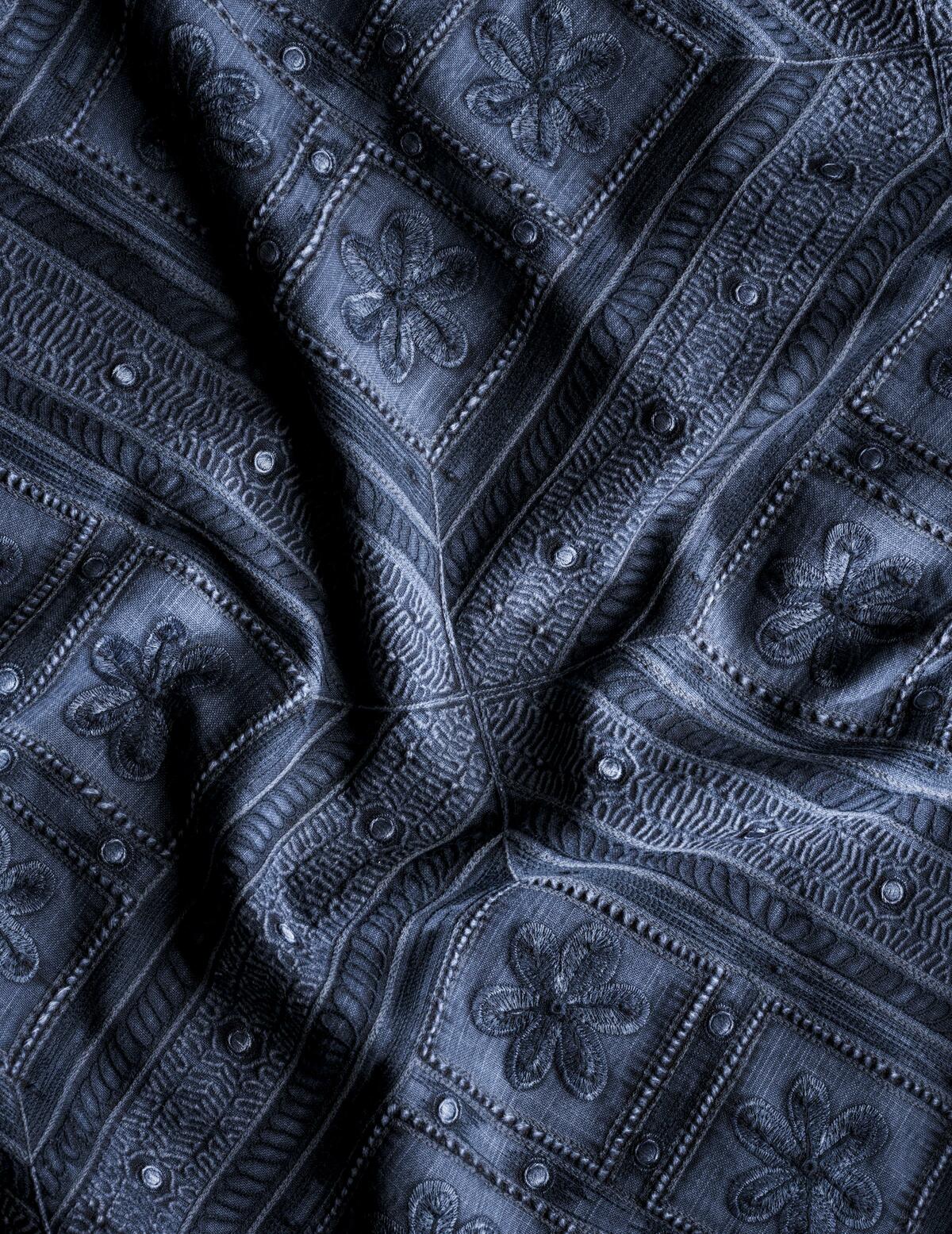
“All the stories are there to see,” she says. “So many that the assortment did become bigger than anticipated, because we were wowed by what we found in each garden ‘room.’” The final collection exceeds 100 styles, with Sanderson’s respect—and affection—for English craftsmanship evident in every stitch. “The British decorating style can be a bit out there, mixing patterns and pairing lots of different elements,” she continues. “Our houses are older—and we never throw anything away!” She wanted the Highgrove collection to feel the same: “not like it’s brand-new or thematic; like it’s eclectic and layered.” The strong but soft color palette conveys a similar sense of déjà vu. “Both the patterns and colors are intended to harmonize with not just the interiors but the natural environment,” Vallis explains. “The whole idea was that the collection grew from the garden and walked into the home.”
Taking full advantage of Sanderson’s cherished historic archive, several of the new styles adopt motifs from classic documents and carry them into the present day. “You’ll have a design from the 19th century that pops up again in a new iteration in the 1930s and then again in the 1980s. Every time, it’s reimagined and made relevant,” says Vallis. That ongoing creative evolution is on display in the collection’s “key storytelling piece,” an iconic toile that portrays the monarch in profile among the hedgerows.
TOILE, THYME AND TOPIARIES
“The King has been gifted lots of busts over the years, and he has incorporated them all into the yew tree hedge that encircles the garden,” says Vallis. In Highgrove Toile, one such silhouette is tucked beneath a leafy arch that repeats across the pattern. “It’s very amusing, like they’re talking to each other.” Also depicted alongside the print’s wild deer, feathery fronds and winding grapevines are the Oak Summer House and circular Derbyshire gritstone seat. Traditional Tetbury Blue and Yew Green are joined by a rich Oak maroon and, exclusively in the wallpaper, Madder Rose colorway. “Oak is this beautiful chocolate, which feels different and new,” says Vallis. “Like toile itself, it’s very right for now.”
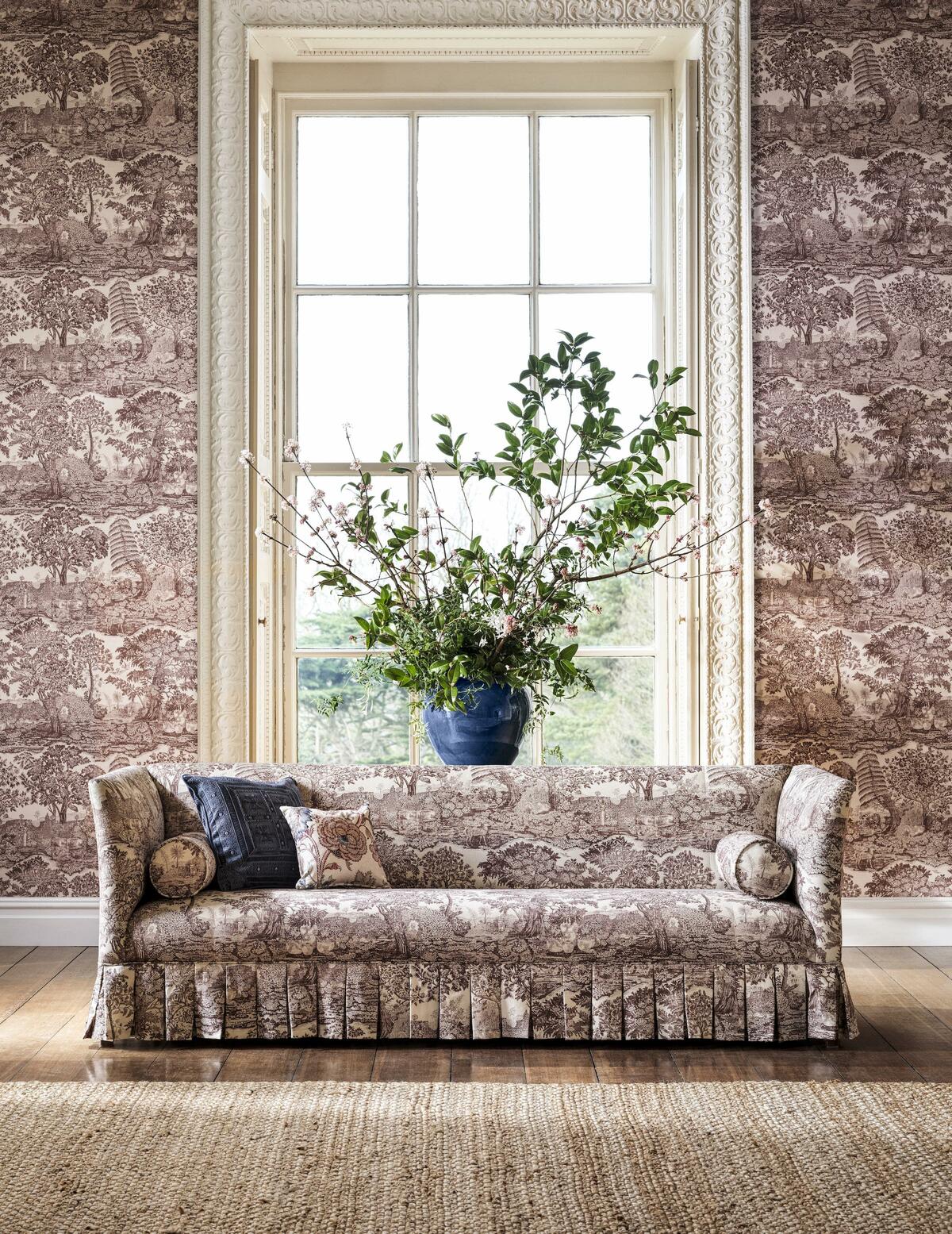
If the stone-faced figureheads in Highgrove Toile want more company to join their group chat, they could turn to another design incorporating real-life garden elements—including a nymph who goes by Goddess of the Wood. The Stumpery captures the Victorian practice of growing ferns and mosses around fallen tree branches and shorn trunks as a means of merging the new and the old so that nothing ever goes to waste. This garden nook is notable for its green oak temple, the thatched tree house and a patchwork wall made from mason stones bestowed on His Majesty. “It’s got quite a different atmosphere to the rest of the garden; incredibly beautiful but much shadier and moody,” says Vallis. “You imagine nymphs and fairies flitting about.” All can be found in the pattern, available as a fabric and wallpaper in Lichen and Fern; a scenic mural with a grasscloth texture in Dell; and a woven tapestry, also in Fern. Across these materialities and hues, the design’s lush watercolor look recalls the masterful landscapes at the National Gallery. “We were asked to illustrate it, so we sat in the Stumpery, drew a sketch, made a painting from it, and that became the basis for the engraving we use for the print,” says Vallis.
Ambling back into the sunlight, Thyme Walk gathers up the fragrant herb along with the lavender spears and marjoram blossoms that line Highgrove’s meandering herbal avenue. “The smell is amazing,” says Vallis. “The estate hosts tours where there’s no talking, no historical lectures. The King’s idea is that you merely spend time immersed in nature—the scents, the sights, all the wonderful wildlife surrounding you. It’s very sensory.” In the Lichen/Gooseberry palette, daintily detailed sprays of yellow and orange are scattered across the wallpaper, while Damson/Quince blooms in pink, red and purple. Those two colorways are joined by a third, silvery-blue Mineral/Parchment, in the corresponding embroidery, which incorporates stitch techniques similar to those found in handsewn medieval samplers: the very type of age-old artistry The King’s Foundation heralds.
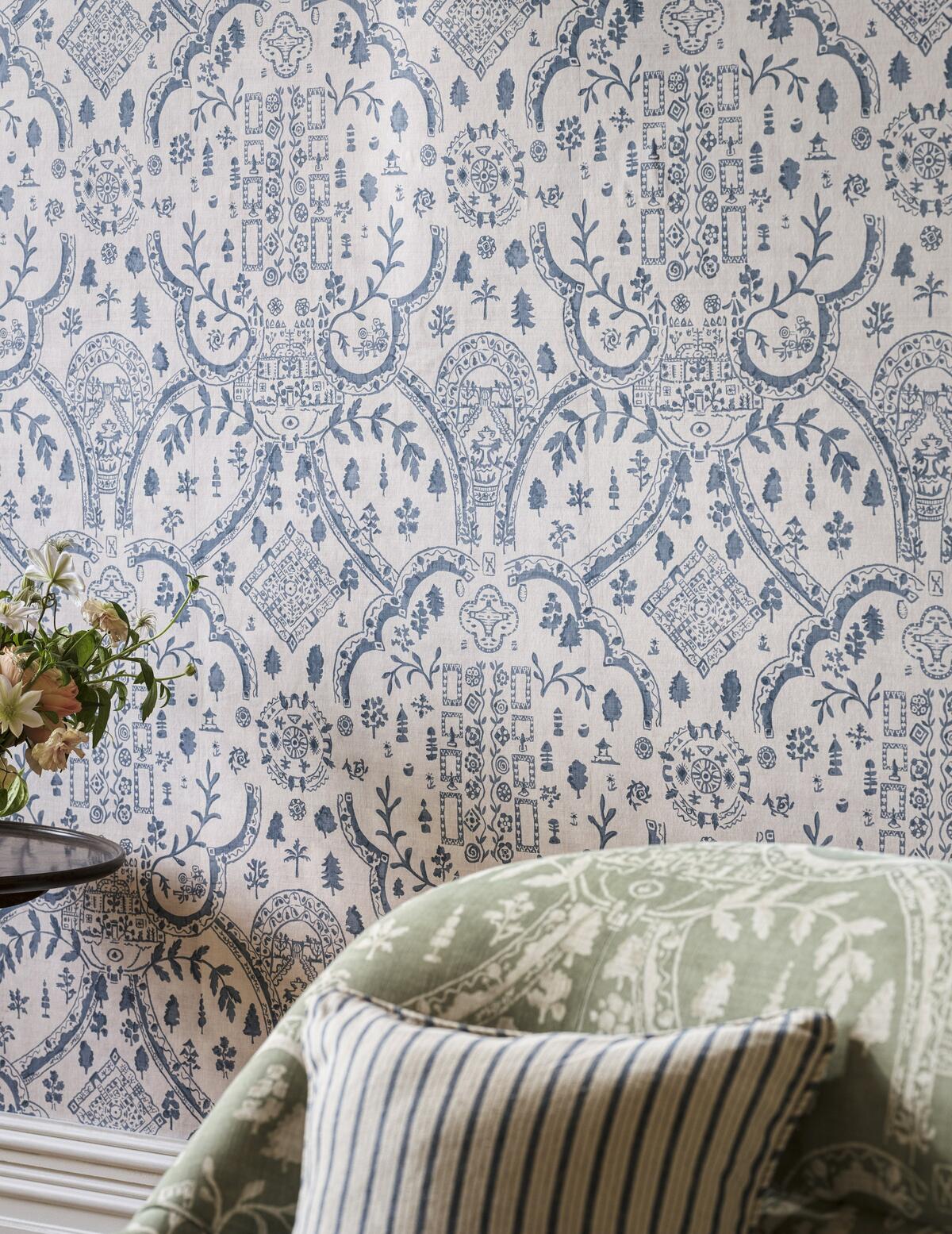
A pictorial blueprint of the grounds with a particular focus on the yew hedge and kitchen garden in addition to the Thyme Walk, Topiary View’s storybook pattern is rendered on a base of hemp that’s saturated ocher-brown Muntjac or Tetbury Blue, while the cool green Thyme colorway serves as an outdoor fabric. In the complementary wallpaper, the color placement is flipped, putting the Bemelmans-like pictures of the house, water fountain and shrubbery against a paler ground. “The simplicity of the design makes it modern,” says Vallis. “It’s quite easy to embrace.” Salisbury fabric, a stylized floral in Tetbury Blue or Madder Rose intertwining the motifs of two different archival indienne documents, is also printed on hemp—marking the first time Sanderson has used the material. Between environmentally friendly digital production, which uses less water than conventional techniques, and the recyclable content, these two designs are “the most sustainable in the collection,” says Vallis. Like Topiary View, Salisbury is also available as a wallpaper, as well as a lavish embroidery in Crimson or Yew Green, intricate stitching atop a printed ground creating a tonally nuanced and dimensional surface.
CULTURAL TOUCHSTONES
It’s only natural that all the patterns in the new collection draw inspiration from the garden; many also reflect diverse cultural influences from around the world. The embroidery Shand Gate combines decorative needlework with air-knife printing to replicate Highgrove’s artfully carved Indian wooden gate, a landmark dedicated to the late Mark Shand, founder of the Elephant Family charity. “It’s a full embroidery featuring different types of yarn that attract or repel the dye to different degrees,” says Vallis. “Some resist the color; others soak in it.” In Jodhpur Blue and Indian Oak, the resulting fabric’s hues vary, magically mimicking the dimensionality, ornamentation and patina of its source.
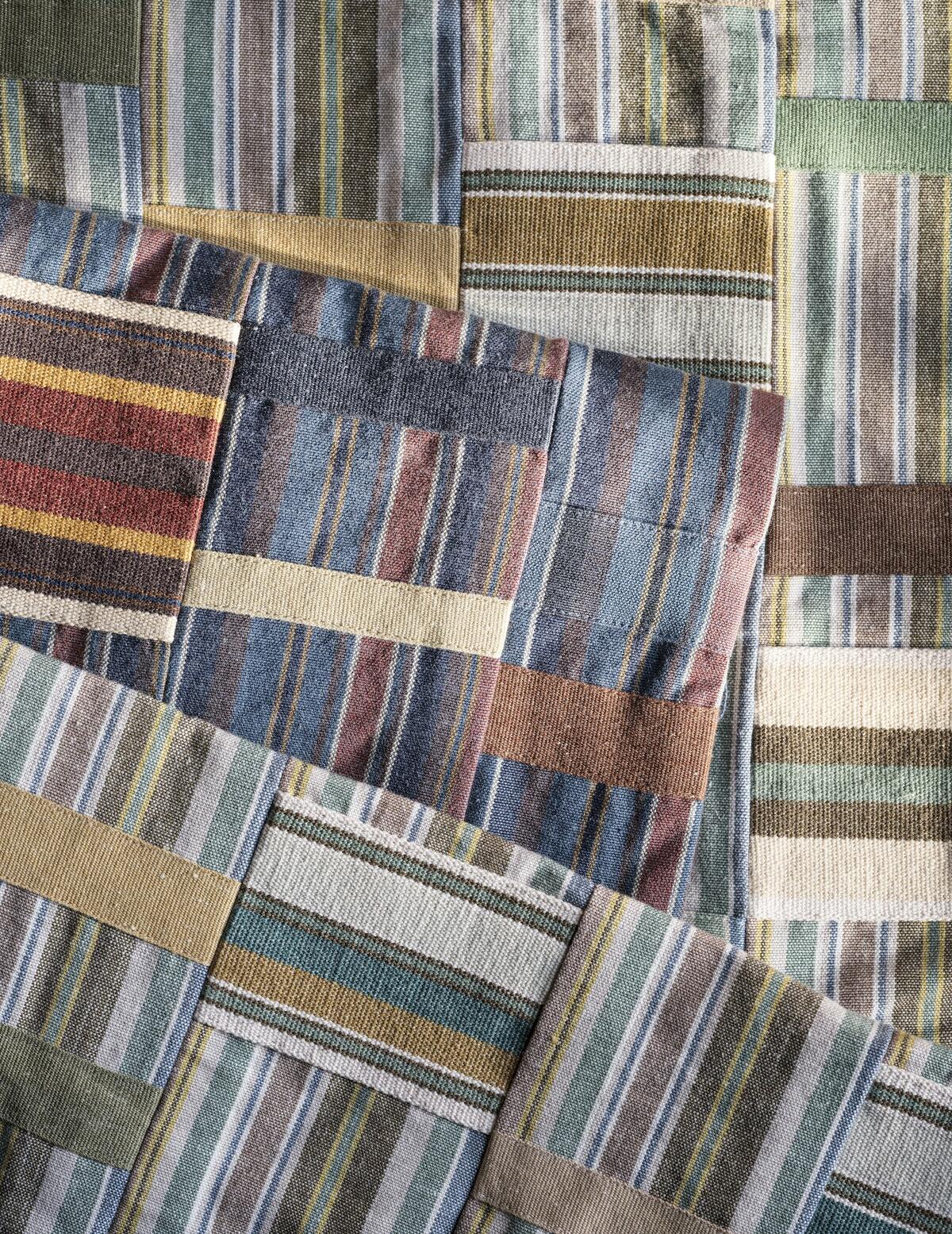
Just as textural, with the added graphic impact of stripes, Ewe Cloth adapts the weave techniques of an archival Kente document originating from West Africa. The new jacquard casts its fabric in gently weathered palettes of Russet/Midnight and Fern/Lichen that are cut into strips and squares, then sewn back together for a tactile patchwork effect. “It’s a lovely conversation piece that celebrates another kind of craftsmanship,” says Vallis. “It looks great as an accent on a footstool or a headboard.” She considers the textile an abstraction of Highgrove’s Gift of Stones, the wall built of masonry blocks that also features in The Stumpery pattern. “In every collection, we like to include a style that’s a bit more geometric,” she continues. “We thought Ewe Cloth might be too much of a departure for the Highgrove series, but when we sent the sample to King Charles and our colleagues at the foundation, they loved it.” Also on the checklist of global motifs: suzanis, the central symbol of Annabel’s Suzani embroidery fabric.
GLORIOUS FLORALS
Architectural busts, ornate gates, sculptural stumps and fragments of masonry all contribute to the eclectically English layout of the Highgrove grounds, but at the heart of any garden—and so many of Sanderson’s most coveted fabrics—are flowers. “My personal favorite is Rose Pergola,” says Vallis, referring to the refresh of an early-19th-century document that just so happens to also echo the structure of Highgrove’s pergola, designed by architect Charles Morris as a 50th birthday present to the then Prince of Wales. With the common thread of a meticulously detailed stripe of vivid little blossoms against warm neutral backdrops like Rose Chintz, Parchment and High Tea, the pattern exists in different permutations across fabric, embroidery and wallpaper.
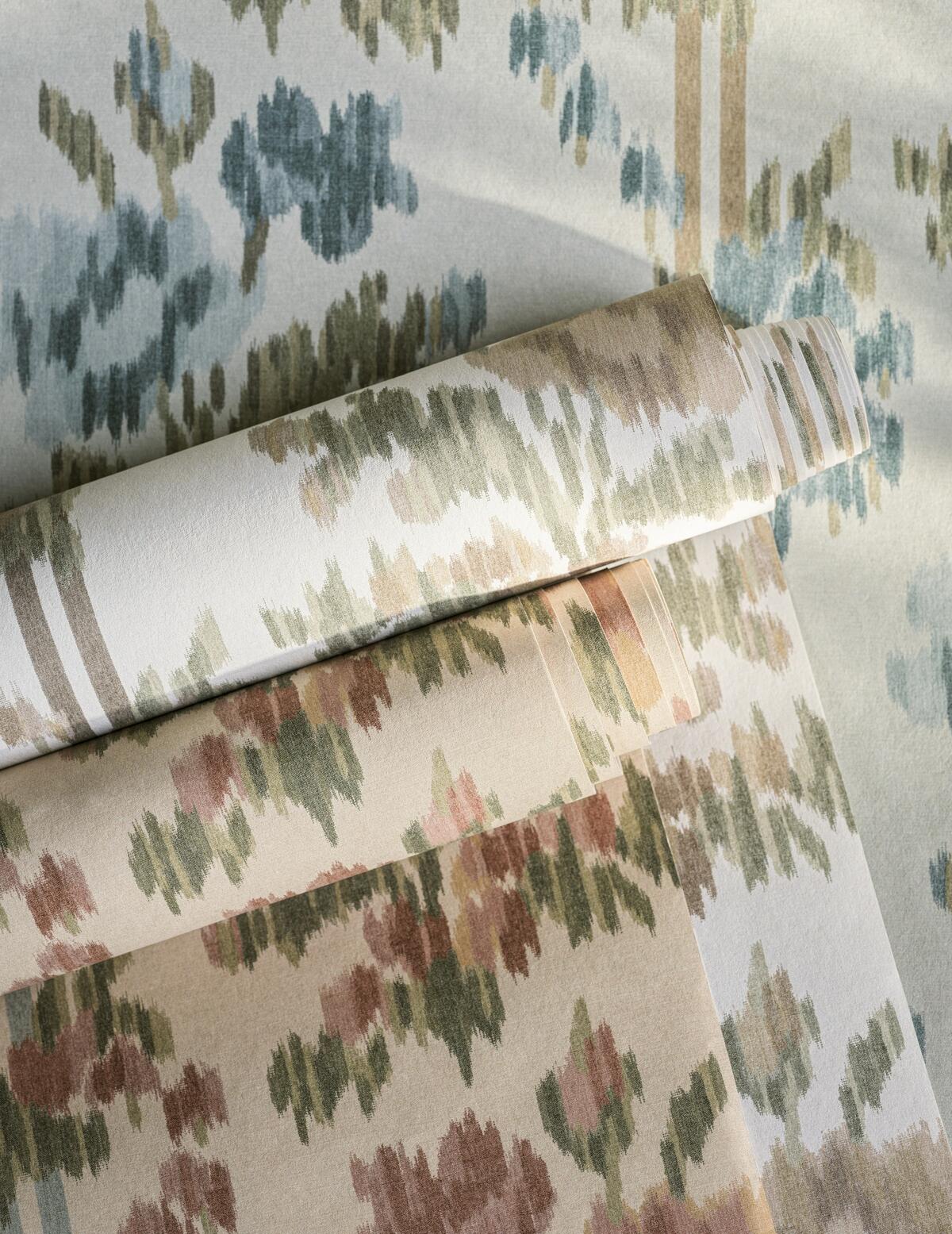
The classic English bloom is modernized as an intentionally soft-edged, almost pixelated warp-printed ikat in Apothecary Rose, and joined by frilly hydrangea in the effervescent Hydrangea & Rose—an “all-out floral celebration” printed on sustainable hemp in the Chintz colorway and suitable for indoor-outdoor use in High Tea. Traditional English crewelwork by way of Indian mills gives Kitchen Garden a cornucopia of pears, apples, gooseberries and beans. “Our surface-print machine is a hundred years old, so you get this beautiful reticulation alongside the craftsmanship of the embroidery,” says Vallis. And never mind the many red roses: Frothy stalks of sepia pink, warm white and soft blue take pride of place in Delphinium & Lilac, a fresh iteration of the primary-colored bouquets in an archival early 1900s chintz.
“The original didn’t have delphiniums; we painted them in,” says Vallis. “And a wonderful background pinstripe, which actually is authentic to the document, conversely has the effect of contemporizing this update.” Possibly the most quintessential floral in the Highgrove collection, it’s also a particular favorite of His Majesty, who—along with his many other epithets—happens to be president of the nearly century-old Delphinium Society. It’s a passion he shared with his late mother. As Vallis notes: “He and Queen Elizabeth held a competition every year to see who could grow the tallest flower.” Happily, those delphiniums, along with so many other aspects of the historic gardens at Highgrove, are now available to all through Sanderson’s glorious textile homage.
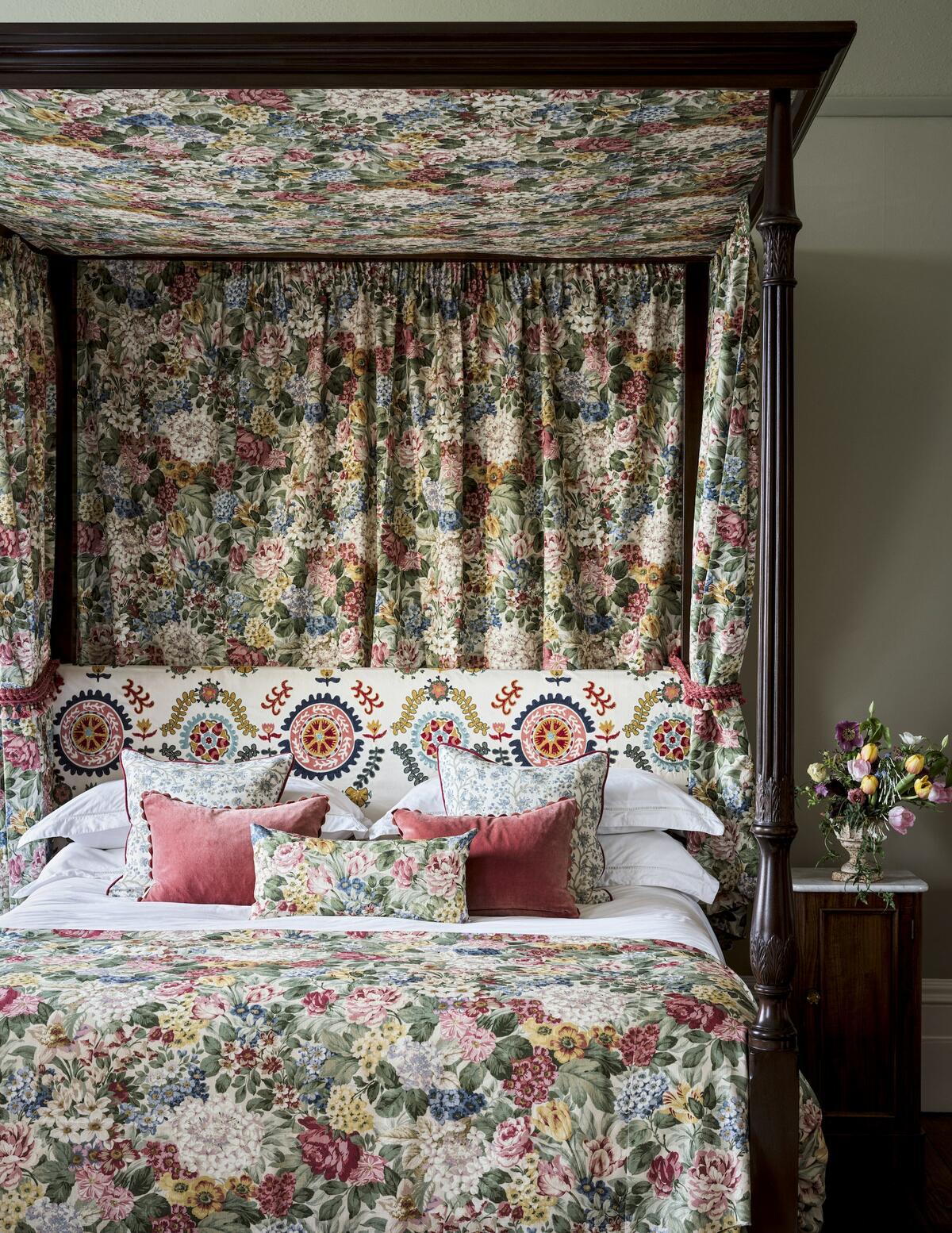
This story is a paid promotion and was created in partnership with Sanderson.
Homepage image: Swathed in Thyme Walk fabric in Lichen/Gooseberry and Topiary View fabric in Thyme, an artfully crafted figure overlooks the gardens at Highgrove | Courtesy of Sanderson



